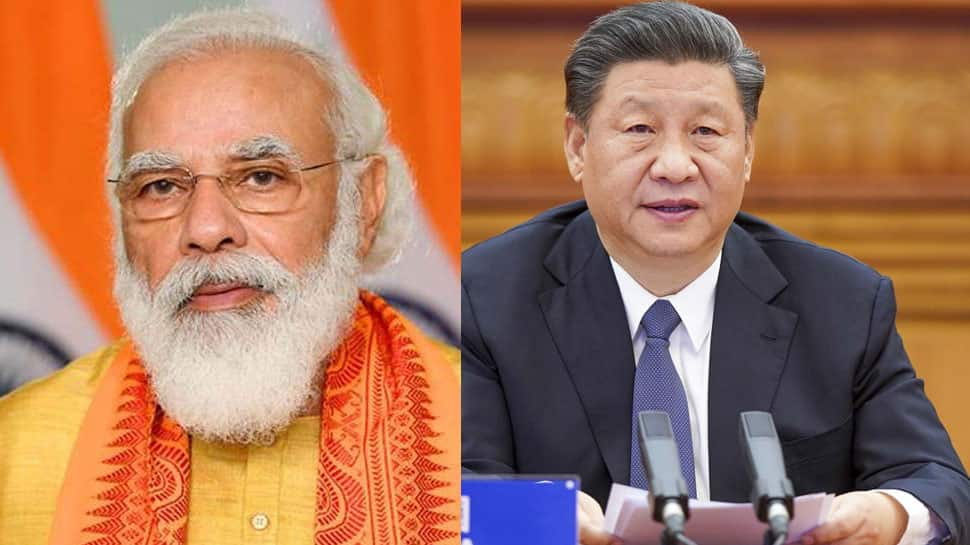Amid the heightened tension along the Line of Actual Control (LAC) in Ladakh, Prime Minister Narendra Modi and Chinese President Xi Jinping will face each other for the first time since the Galwan Valley incident during the BRICS Summit to be held on November 17. Both the leaders will be face to face virtually for the first time amid the India-China LAC tension.
Since 2014, both leaders have met 18 times including at two famous informal summits-- 2018 in Wuhan informal summit and 2019 in Mamallapuram.
In 2019, the two leaders met for the first time since the re-election of PM Modi on the sidelines of the SCO Summit in Bishkek. This was followed by the visit of Xi to India for the informal summit. For BRICS meet, both leaders have been to each other's country, like PM Modi visited Xiamen in 2017 and President Xi to Goa in 2016.
A BRICS statement read, "The theme of the meeting of the leaders of the BRICS countries is “BRICS Partnership for Global Stability, Shared Security and Innovative Growth”. The main purpose of the Russian BRICS Chairmanship in 2020, as it is for multifaceted cooperation between the BRICS countries, is to contribute to raising living standards and quality of life our peoples."
"This year the five countries have continued close strategic partnership on all the three major pillars: peace and security, economy and finance, cultural and people-to-people exchanges," it added.
“Despite the current global situation due to the spread of the coronavirus infection, the activities under the Russian BRICS Chairmanship in 2020 are carried out in a consistent manner. Since January 2020 more than 60 events have been organized, including via videoconferencing. The BRICS Summit will be the jewel-in-the-crown event of the Russian BRICS Chairmanship, which will provide the impetus for further strengthening cooperation together with our partners to ensure the well-being of BRICS countries,” noted Anton Kobyakov, Adviser to the President of the Russian Federation, Executive Secretary of the Organising Committee to Prepare and Support Russia’s SCO Presidency in 2019–2020 and BRICS Chairmanship in 2020.
Earlier, Air Chief Marshal RKS Bhadauria said that the Indian Air Force is very "well-positioned" to deal with any threat and very strong deployments have been made in all relevant areas considering the security scenario.
ANI quoted him as saying, "It depends on how the talks progress. The talks towards disengagement, followed by de-escalation, are on. We hope that the talks will progress along the lines that are expected: IAF Chief RKS Bhadauria, when asked 'how do you see the next 3 months play out in eastern Ladakh?'
IAF chief further said, "current progress is slow, what we see is an increase in an effort to dig-in for winter, in terms of forces on the ground, in terms of deployment of air assets in airfields close by. Defence forces see the ground reality after that. Our further action will depend on ground realities."
"China will use Skardu (airfield in Gilgit-Baltistan) is an open-ended question. But if China needs to take Pakistan's help to confront us, I have nothing to say. If Skardu gets used by China then it is a collusive threat and we will deal with it accordingly," IAF Chief added.
Addressing a press conference ahead of Air Force Day on October 8, the IAF chief said Chinese airpower can't get the better of India's capabilities but at the same time added that there is no question of underestimating the adversary, adding that the IAF is prepared to deal with a two-front war along the northern and western borders if such a scenario arises.
When asked about the situation in eastern Ladakh and a possible threat from China in the region, Bhadauria said, "Be rest assured that we have deployed strongly to deal with any contingency," adding "We have made deployment in all relevant areas; Ladakh is a small part."
The Air Chief Marshal said the IAF is "very well-positioned" to deal with any action along the northern border, adding that induction of Rafale jets has given us an operational edge.
India has deployed thousands of troops and heavy weaponry in the high-altitude region to deal with any eventualities. The IAF has also deployed almost all its frontline fighter jets like Sukhoi 30 MKI, Jaguar, and Mirage 2000 aircraft in the key frontier air bases in eastern Ladakh and elsewhere along the Line of Actual Control.
The newly inducted fleet of five Rafale jets has also been carrying out sorties in eastern Ladakh. The IAF has also been carrying out night time combat air patrols over the eastern Ladakh region in an apparent message to China that it was ready to deal with any eventuality in the mountainous region.
The armies of the two countries are scheduled to hold a fresh round of talks on October 12.
Notably, India and China are locked in a five-month-long bitter border standoff in eastern Ladakh. Both sides have held a series of diplomatic and military talks to resolve the row, but there has been achieved no breakthrough to end the standoff.
















